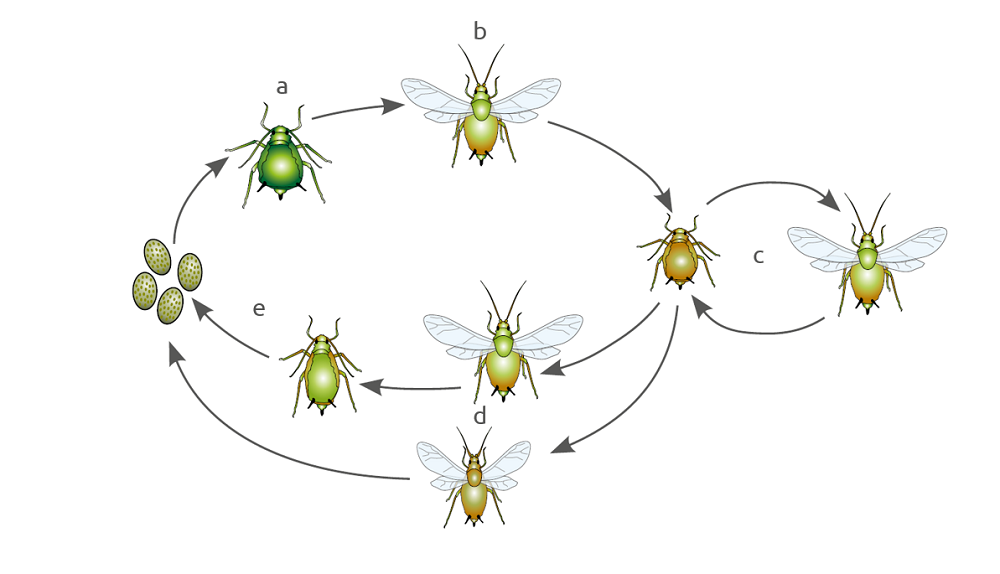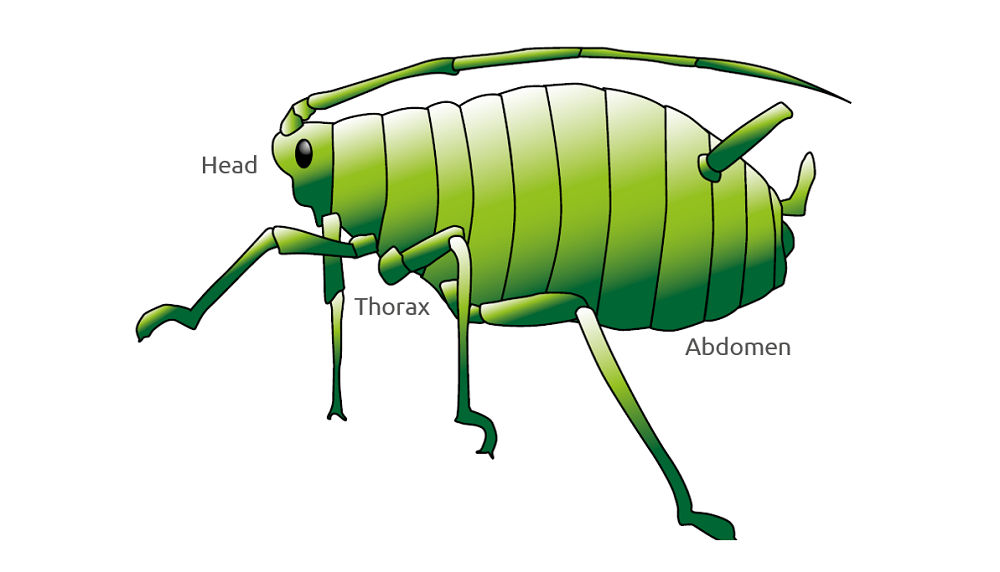- Home
- Knowledge library
- Identification and management of bugs and thrips in field crops
Identification and management of bugs and thrips in field crops
Numerous species of bugs (Hemiptera), which include true bugs, aphids, whiteflies and hoppers, and thrips/thunderflies (Thysanoptera) are plant-feeding pests, with some spreading plant viruses. Many are also natural enemies of pests, so it is important to know which species are present in your fields.
.PNG) AHDB
AHDB
General life cycle and defining features
General life cycle: focus on aphids
Bugs often have complex life cycles, especially aphid species. Most agronomically important aphid species have separate winter and summer hosts. Some aphid species are able to reproduce asexually all year round.
- In spring, when conditions are suitable, new individuals emerge and develop into fundatrices – these reproduce asexually
- Their offspring develop wings and migrate
- Many more asexual generations are produced on the summer hosts
- In the autumn, winged males and females are produced, which migrate back to the winter host
- These then mate and overwinter, either as eggs or active stages
Although aphids only fly in warm conditions (above 15°C), they move within crops at relatively low temperatures.
When grass temperatures drop below -6°C for around three-to-five consecutive days, it often results in high aphid mortality.
Note: Due to natural cycles, aphid populations usually ‘crash’ in July and August.
 AHDB
AHDB
Defining features of bugs
Bugs are characterised by their sucking mouthparts, which comprise a piercing, segmented rostrum and compact, often flattened bodies. The front pair of wings is usually leathery and the back pair is usually membranous. Immature aphid and plant bug stages (nymphs) resemble smaller versions of the wingless adults, while whitefly nymphs resemble oval, flattened scales. Nymphs progress through a number of instar stages before becoming adults.
 AHDB
AHDB
Defining features of thrips
Thrips, commonly known as thunderflies, are not actually flies and are more closely related to bugs. They are tiny, slender insects with fringed wings. Plant-feeding thrips puncture the plant tissue and suck out the contents; some species are vectors for plant viruses.
 PGRO.JPG) PGRO
PGRO
Aphid pest species
Other bug pest species
Thrips pest species
How to encourage natural enemies of field crop pests
Only Heteropteran bug species are natural enemies and their contribution to pest control is unknown. Of the carnivorous families, only Anthocoridae and Nabidae, occasionally Reduviidae, occur on farmland.
 Jon Oakley.JPG) Jon Oakley
Jon Oakley
Topics:
Sectors:
Tags:



 ADAS.JPG?v=637780269570000000)
 Bayer CropScience.JPG?v=637780269570000000)
 University of Warwick.JPG?v=637780269570000000)
.jpg?v=637780269580000000)
 Fera.JPG?v=637780269580000000)
 University of Warwick.JPG?v=637780269580000000)
 Ian F G McLean.JPG?v=637780269580000000)
 Dewar Crop Protection Ltd.JPG?v=637780269580000000)
 ADAS.JPG?v=637780269580000000)
 University of Warwick.JPG?v=637780269590000000)

 BBRO.JPG?v=637780269590000000)
 Bayer CropScience.JPG?v=637780269590000000)
 PGRO.JPG?v=637780269590000000)
 Joshua Burnstone.JPG?v=637780269590000000)
 Rothamsted Research.JPG?v=637780269600000000)